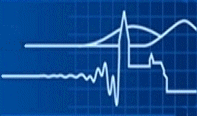WS 2016/17 - X-ray Analysis: Applications in Material and Life Sciences

Dozent: Prof. Dr. Alex Ulyanenkov
Zeit: Mo 10-14 Uhr, 14 täglich
Ort: SR II, Physikalisches Institut, Hermann-Herder-Str. 3, 79104 Freiburg
Beginn: 24.10.2016
The faculty of Mathematics and Physics offers a course on modern X-ray Analysis: Applications in Material and Life Sciences. The course covers the basics of X-ray scattering processes, the fundamental theories describing the scattering of X-ray radiation from solid and soft matter, the instrumentation for X-ray experiments and data analysis techniques. There are multiple experimental setups and interpretation methods discussed in application to various objects: from semiconductors to biological cells and proteins.
Zusammenfassung:
X-rays have been proven to be a powerful and reliable tool in studying a large diversity of micro- and nanoscale objects. The wavelength of X-rays is a perfect fit to the typical sizes of basic structures used in all modern technologies and science: crystallographic lattice in semiconductor thin films; biological molecules in protein crystallography; nanoscale objects like quantum dots and quantum wires in optoelectronics; and many others. This fact initiated the intensive development of various measurement techniques and instrumentation to satisfy the large variety of requirements coming from scientific and industrial communities. Information on the intrinsic structure of samples is further obtained from the detailed analysis of the scattered and detected X-ray intensities, which demands robust theoretical methods for data interpretation. The experimental data obtained from modern X-ray
equipment contains a large amount of information hidden in the fine structure of the measured X-ray spectra. This fine structure became measurable due to the essential progress in the development of X-ray optics, detectors and X-ray sources. The growing complexity of both experiments and structure of the samples constantly stimulates the
further development of the theoretical methods for data analysis.
Students will learn about awide variety of the applications of X-ray methods in modern material researches, biological sciences, proteomics, technological processes and quality control. The obtained knowledge can be later used and applied both in scientific and academic studies and in industrial sectors for R&D and QA purposes. The area of applications covers the whole domain of natural sciences and technologies starting from structure determination of proteins and biological objects on one side and ending by the investigation of atomic ordering in modern nanostructures. Thus, the subject of course is useful for a large audience, and the market of X-ray analytical instrumentation reflects this wide application area.
There are multiple X-ray techniques used for sample evaluation, each of which is suitable for different kinds of the structures. X-ray Bragg diffraction probes samples possessing a crystallographic structure and characterizes the structure on a broad scale, from micro-crystallites in polycrystalline materials to the properties of coherent epitaxial samples averaged over large areas. The specular Xray reflectivity characterizes surface and subsurface amorphous or crystalline layers in view of their electron density profiles, layer thicknesses, and interface roughness. The X-ray small-angle scattering method exposes valuable information on the distribution and characteristics of the non-uniformities inside or on the surface of the sample. The pair-distribution function method permits us to obtain the interatomic distances for amorphous, crystalline and quasi-crystallinematerials.
Vorläufiges Programm:
Introduction in X-ray analysis and basics of X-ray diffraction
X-ray scattering and interaction with the matter
Advantages of X-rays
Techniques and methods
Fundamentals of crystallography
X-ray instrumentation
Lab equipment
Synchrotrons
Components: Sources, Optics, Detectors
Measurements
Theories of X-ray scattering
Basics of scattering theory
Kinematical theory
Dynamical diffraction theory
Resolution function
Diffraction from lateral nanostructures
X-ray investigation techniques
Powder diffraction
High-resolution X-ray diffraction
X-ray Reflectivity
Small-angle X-ray scattering
Residual stress analysis
Texture analysis
Protein crystallography and single crystals
Small molecules X-ray analysis
Pair-distribution function method
X-ray imaging
X-ray topography
Applications of X-ray methods
Material Research
Proteomics and Small molecules
Mineralogy and Petrochemical
Quality Control
Preclinical medicine, micro-tomography
Cement, Environmental, Forensic, Heritage
Semiconductors
Metallurgy, Airspace and Automotive
Software for X-ray data interpretation
Powder X-ray diffraction
Biological SAXS
Thin film analysis
Texture and stress
Structure determination
Vorkenntnisse:
Grundkenntnisse in Physik
Literatur:
1. A.Benediktovitch, I.Feranchuk, A.Ulyanenkov, Theoretical Concepts of X-ray Nanoscale Analysis, Heidelberg: Springer, 2013
2. U.Pietsch, V.Holy, T.Baumbach, High-Resolution Xray Scattering: From Thin Films to Lateral Nanostuctures, 2nd ed., Springer, Heidelberg, 2004
3. J.Daillant and A.Gibaud, X-ray and Neutron Reflectivity: Principles and Applications, Springer, Heidelberg, 1999
4. R.E.Dinnebier and S.J.L.Billinge, Powder Diffraction: Theory and Practice, RSC Publishing, Cambridge, 2008.
